Comparisons 11 min read
New Porsche Taycan facelift 2024 review
In February 2024 Porsche announced an extensive update for its Taycan. The new versions have refreshed design, new equipment, more power, improved range and are able to charge faster. We compare a 4S Sports Saloon with the first generation car to see whether the upgraded version is worth getting.
Jump to:
Overview Range and charging Powertrain Chassis Design Display and control system More standard equipment Verdict Key SpecsOverview
The Porsche Taycan arrived on our roads in 2020 and proved to be a game changer in the EV segment – we rated it the best electric car on our website and YouTube channel – and it was a sales phenomenon, shifting 150,000 units globally in its first three years. Even today we still think it looks great and is technically impressive – in fact we replaced our Tesla Model 3 Performance company car with one.
Stuttgart’s four-door saloon has a broad range of talents meaning it still doesn’t have a great deal of competition… BMW’s i5 M60 and Mercedes-AMG EQE 53 is a close match in terms of price and power but they’re very different in character, the Tesla Model S doesn’t come in right-hand drive anymore, which just leaves the Audi e-tron GT which is almost a Porsche but not quite, and the Polestar 4 and Lotus Emeya, although neither offer the same level of handling precision.
We got a Taycan 4S Sports Saloon to compare it to our own (albeit we have the Cross Turismo version) to delve a little deeper into the changes and to see whether the facelift is any better.
Range and charging
Depending on the body versions and powertrain, range has increased by up to 421 miles, around 109 miles (a 35 per cent improvement), thanks largely to more powerful batteries. It also charges faster, so while they are few and far between, at 800-volt DC charging stations, it can be juiced at up to 320kW. That’s 50kW more than before. With greater charging stability, it also means high charging capacities can be sustained for up to five minutes. This reduces the charging time from ten to 80 per cent by just below four minutes to 18 minutes, despite a 12 per cent increase in battery capacity (from 93 kWh to 105 kWh).
The figures on paper are impressive, but the improvement in efficiency is actually very tangible. In our first gen Taycan 4S, we normally average around 3.0 mi/kWh – with this car over five days of mixed driving we were getting 3.5 mi/kWh. That’s an impressive improvement and also very good for a high performance EV. Interestingly Porsche officially quote a combined consumption figure of between 3.1 to 3.7…. It’s refreshing for a manufacturer not to exaggerate their consumption estimates!
Also, where before you’d have to lock your charge port door with a hand gesture, which didn’t always work immediately, or via the control panel on the centre console, once the plug is removed, it now closes automatically, making life so much easier especially when you’re in a rush on the school run.
The Porsche Charging Planner is now three times faster than its predecessors. If there is no connectivity, the calculation is carried out offline in the vehicle, and with active route guidance, it better prepares the battery before it needs to be charged. It’s also more clearly structured. For example, you can now preselect the desired minimum charge level using a virtual slider on the central display and when planning routes, you can prioritise or blacklist certain charging points based on criteria such as charging capacity and plg and charge capability. It also includes more extensive information, for example whether toilets and restaurants are available at the charging stop. Video streaming is also now available on the passenger screen and Apple’s immersive next-gen CarPlay is standard, which gives access to the vehicle’s features, like radio and temperature settings, without having to go into the car’s native infotainment.
While statistcally most charging takes place at home, integrated in the My Porsche app, the Porsche Charging Service gives you access to over 550,000 public charge points (incuding Porsche Centres, networks like IONITY, Gridserve, BP Charge Master, Mer, Shell Recharge, ChargePoint and Ubitricity, and selected luxury hotels, spas and fine restaurants) throughout the UK and Europe at a discounted price of just 39p/kWh for the first three years of ownership. Believe me, that makes an unbelievable difference when you consider in August the average price to charge an EV on public rapid/ultra rapid chargers was 80p/kWh. Also thanks to intelligent communication between the car and the charge point, charging will start automatically without the need for using the app or card.
Powertrain
A new rear-axle motor with up to 80kW more power and 40Nm of torque but weighing round 10kg less than the previous unit, means quicker acceleration. The Taycan Sports saloon for example takes 4.8 seconds to complete the 0-62mph sprint – 0.6 seconds less than before, while the Turbo S hits 62mph from standstill in just 2.4 seconds – 0.4 seconds faster than its predecessor.
With the new push-to-pass function in the Sport Chrono package, a boost of up to 70kW, depending on the model, can be called upon for ten seconds at the touch of a button. This means the Sports saloon delivers 60kW more than before meaning it will reach 0 to 62 in 3.7 seconds at the touch of a button!
The simultaneous improvement of performance (and efficiency) is down to a number of other factors too, such as the revised inverter with tweaked software, improved cooling systems, a new heat pump and stronger brake recuperation.
Chassis
While you feel the weight of most EVs on a challenging road, you never did with the Taycan. It is balanced, stable, precise, and feels like a proper Porsche. The new one offers the same great driving experience, but it’s upped the ante. All Taycan models come as standard with adaptive two-chamber air suspension – the springs work with two-valve dampers – one is responsible for the rebound stage and one for the compression stage, meaning they react quickly and precisely to changing driving conditions or altered driving modes. To sum up, this is still very much a driver’s car, with the controls, steering, brakes and accelerator all calibrated to perfection, which is something of a rarity in an EV.
The new cutting-edge Porsche Active Ride suspension can be ordered as an option and uses motor pump units to control the level of fluid in the active dampers. Sadly our car wasn’t equipped with it so we can’t tell you what it’s like, but essentially the system can actively push down on any corner of the car, to totally eliminate body roll, pitch and dive while increasing the spread between comfort and sporty handling.
There are also functions that overcompensate for body motions, so rolling into corners like a motorcycle and diving and pitching like a helicopter under acceleration and braking. Some motoring hacks have reported to find it unsettling with the car moving opposite to how you expect it to but it is user-selectable, and not available in Sport and Sport + driving modes. The system also raises the car by 55mm when a door is opened, to help make getting in and out easier, which is handy as this car sits very low. Porsche Torque Vectoring Plus and rear-axle steering is still available separately (standard on Turbo and Turbo S).
Porsche modified the range of wheels for the Taycan as well, with a focus on efficiency, so now all variants now come as standard with aerodynamically optimised wheels and reduced-rolling-resistance tyres.
Design
Outside – the styling tweaks are very subtle. The air intakes at the front have been reshaped, which together with the streamlined wings, help emphasise the width of the car. The headlights feature new Matrix LED tech (utilising speed, camera and navigation data to illuminate the road) and as an option HD versions are available, with each headlight containing 32,000 individually controllable micro-LEDs, calculating the road conditions every 16 milliseconds and adapting accordingly.
Outback the rear light strip gets a three-dimensional look and a Porsche logo, and an illuminated version of this is available for the first time with welcome/leaving animations.
Inside the base models now come as standard with door sill protectors in brushed aluminium and there are two new leather-free interior options with our car featuring the iconic Pepita houndstooth pattern – not sure how well that textile would stand up to sticky mess from small children though!
Display and control system
The driver can now choose from six views on the instrument cluster. The 3D driving assistance view is a new feature showing a 3D model of the surrounding area with the route, up to three lanes and a maximum of six other road users although we found this just over complicated things and not a particulalr improvement. A configurable battery display has been added to the left-hand display, providing deets about the current state of charge, temperature, and current charging power and target SoC during the charging process. The central display can now be configured with even more individuality. Each app can be also moved to a desired location and saved as a direct access shortcut.
On the steering wheel, the Skip Button replaces the recuperation switch. The mode switch on the steering wheel now comes as standard. Through the pop-up menu in the PCM, any driving mode other than Normal can be configured according to personal preferences and the recuperation function can also be set for your diamond button.
Also new is the revised operating method of the control lever on the left behind the steering wheel, which can be used to adjust the driver assistance systems. It can be moved in all four directions. To change the speed of the cruise control, you just tap the lever up or down. If the mode button integrated into the control lever is pressed, settings for the assistance systems can also be adjusted directly in the driver or central display via pop-up menus. The system was always intuitive, but it’s now so much easier to use, although it would have been nice to have toggle switches for the climate control like there is in the Porsche 911.
For Taycan models equipped with the Sport Chrono package and the Performance Battery Plus, there is also a special push-to-pass button on the mode switch, which provides up to 70kW of additional power for 10 seconds at a time. Sadly our test car didn’t have this.
More standard equipment
Porsche are renowned for charging extra for anything! They are the masters at selling their customers features that should probably be standard for thousands of pounds. So prospective buyers will be pleased to hear there’s now more equipment. So Porsche will throw in ambient lighting, ParkAssist with reversing camera, electrically folding exterior mirrors with mirror surround lighting, heated front seats, Porsche Intelligent Range Manager (PIRM), heat pump with a new cooling system, wireless charging, electric charging ports on the driver and front passenger sides, Drive Mode switch and Power Steering Plus, heated seats in the front and an automatic anti-dazzle interior mirror.
The Surround View including Active Parking Assistance driver assistance package with Top View, Intelligent Park Assist and Manoeuvring Assist is also new.
There’s also a new standard fatigue detection system, although I’m always dubious of these – it came on after 90 minutes of driving when I felt fine. If you need a reminder to take a break perhaps you shouldn’t be undertaking long drives in the first place!
If you spec the Adaptive Cruise Control Premium package it now also includes a Swerve Assist function. If you have to steer around a truck, car or motorbike in a critical situation, the system calculates the ideal evasion route, which is pretty clever.
Verdict
Porsche has made one of the best EVs out there even better. It’s raised the bar in terms of performance, range and charging speed, cruising comfort and dynamic ability. And, thankfully design remains largely unchanged. Its evolution is typical of the brand – it takes an idea and sticks with it – like the 911.
Unfortunately it’s still like a reverse TARDIS – despite its huge exterior dimensions (almost 5 metres long by 2 metres wide) it’s actually a very snug five seater (if you select ‘plus one’) with storage that’s hardly what you’d call class-leading, and like all luxury EVs short-term residuals are terrible. But it is still the benchmark for premium electric saloons. Period.
Prices for the new Taycan range start from £86,500 – an increase of £7300 on the previous base model, and spec-wise it’s so good we’d find it hard to justify spending more money on variants higher up the range. This 4S is £95,900 (up from £90,700), for example and has over £11 grand worth of options, while the flagship Turbo S is £161,400 (up from £148,300).
For those with deep-pockets you won’t find a better EV.
Key Specs
2024 Porsche Taycan 4S Sports Saloon
Price (RRP OTR): From £95,900, £107,437 (model as tested)
Top speed: 155mph
0-62mph: 3.7 seconds
Power: 462hp (340kW), with Launch Control 544hp (400kW)
Torque: With launch control 513lb-ft
Driving range (combined): 342 miles
Charging time: 18 minutes (10-80% at 270kW)
Insurance group: 50
Vehicle warranty: 3 years
Battery warranty: 8 years or 62,137 miles

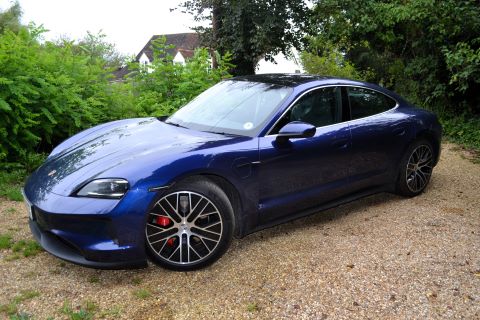


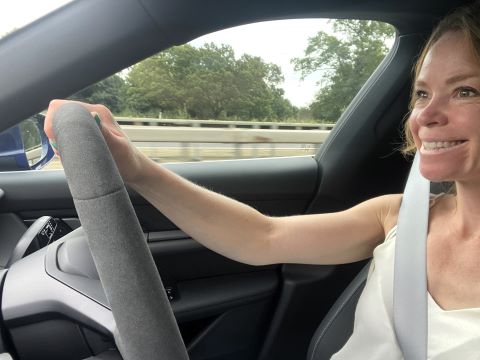
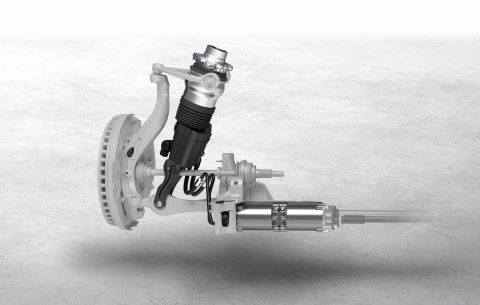 Porsche Taycan Turbo S Active Ride spring-damper system
Porsche Taycan Turbo S Active Ride spring-damper system 
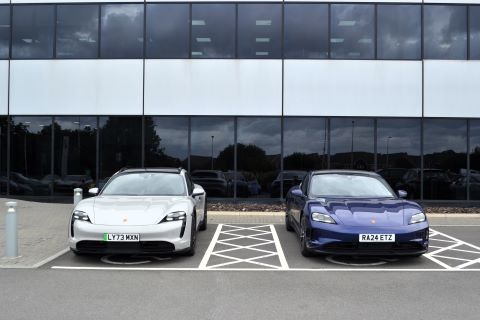
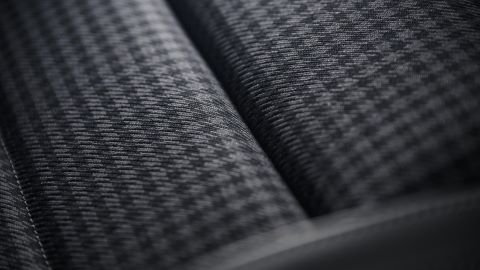

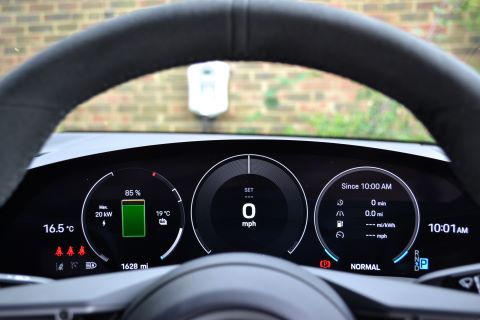

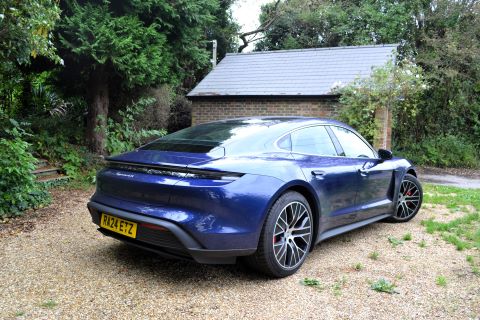



1024px.jpg)

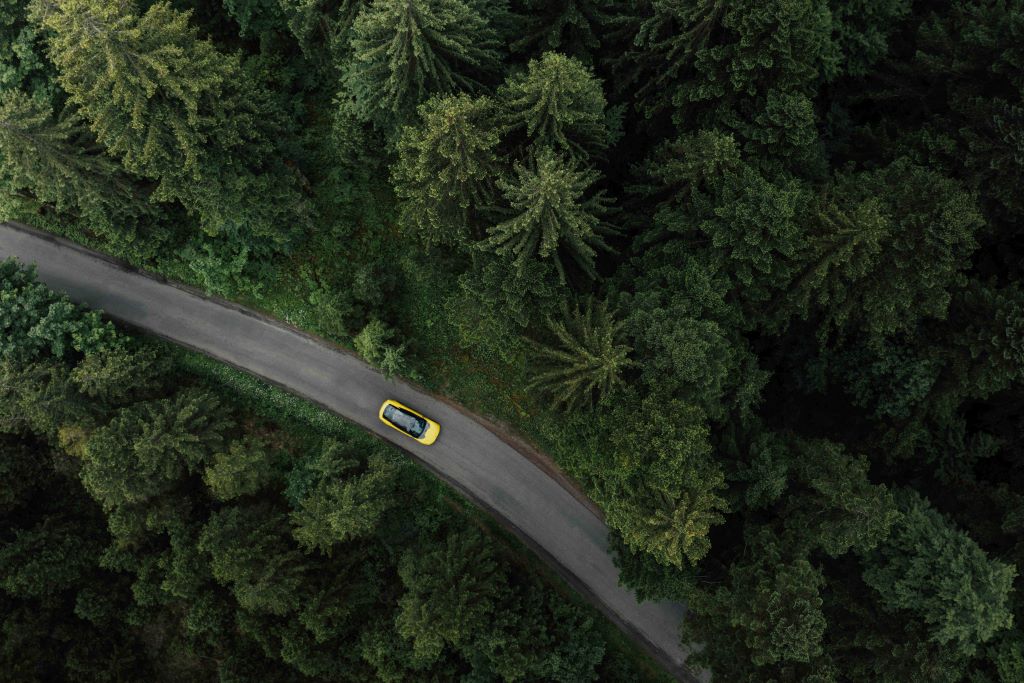


Comments (0)
Be the first to write a comment
Login/ Signup